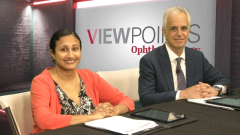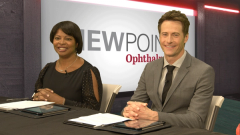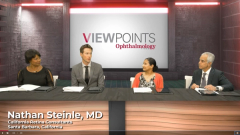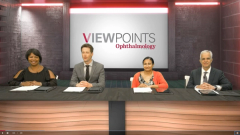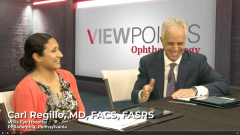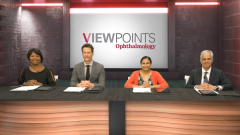
Role of Biosimilars in Neovascular AMD and DME Treatment
Drs Nathan Steinle, Adrienne Scott, Carl Regillo, and Prethy Rao share their perspectives on biosimilars in the treatment of neovascular AMD and DME, emphasizing how their cost will affect their uptake.
Episodes in this series

Nathan Steinle, MD: You mentioned the word biosimilar. Let’s discuss that. This is a paradigm shift for retina. We’ve watched dermatology, neurology, and oncology go through it, and now it’s at the forefront for us too. I’ll start with you, Dr Scott. First, have you delved into biosimilars? What are your thoughts overall on the whole paradigm?
Adrienne Scott, MD: I haven’t waded into the biosimilar pond. I will if forced to by the insurance payers. I feel a bit disappointed in the price points of biosimilars. If the whole point is to save on overall drug costs for our health care system, to my understanding biosimilars are 20% discounted from branded medications. If that’s the case, if a payer is mandating it, I’d be more comfortable starting with bevacizumab. You’ve got a lot of data based on the long track record of bevacizumab. I haven’t used biosimilars. I would, and I will when forced to. But I’d start with bevacizumab before that.
Nathan Steinle, MD: Those are good thoughts. How about over here? Biosimilars?
Prethy Rao, MD, MPH: I’m in the same boat. The jury is still out. In the long term, they’re probably OK. But the data aren’t there. We have other agents where millions of patients have been treated vs hundreds and thousands with biosimilars. I’m similar to Dr Scott. If the insurance payer mandates it, then I’ll use it. But I’m in the wait-and-see category because safety is an important concern, especially with these other anti-VEGF agents that came out recently. I don’t want to put our patients at risk for something that might have an adverse effect that might not be shown in the clinical trials. I’ll go with the wait-and-see approach.
Nathan Steinle, MD: Slow it out there. That’s OK. Dr Regillo?
Carl Regillo, MD, FACS, FASRS: We’re all in the same boat with very little biosimilar utilization. It’s mainly because the step therapy mandates know that there’s much greater savings with bevacizumab off-label. Sometimes we’ll go to a biosimilar as the next step. But the best savings at this time is still with bevacizumab. That makes our space unique. Unlike our other medical colleagues, who use physician-administered biologics, I’m not aware of any bevacizumab-analogous story out there.
Nathan Steinle, MD: Right now we have ranibizumab as a biosimilar, but coming soon will be aflibercept as a biosimilar. Is that going to change the market even more? Will that twist your arm a little more?
Prethy Rao, MD, MPH: It all depends on the cost savings. If it’s a 10%-to-20% decline, are we saving a lot for what we’re doing for the patients? It depends on that and the insurance mandates as well.
Nathan Steinle, MD: How about you?
Adrienne Scott, MD: By that time, what’s going to be happening with high-dose aflibercept? What’s going to be happening with the faricimab market? It’s a fascinating time to be a retina specialist with all these choices. I’m going to have a wait-and-see approach.
Carl Regillo, MD, FACS, FASRS: You might be able to get the equivalent savings by using a second-generation newest agent, which has greater durability than faricimab or high-dose aflibercept. If it translates to 1 or 2 fewer treatments a year, you’ve already saved more money than you would have if you were using a biosimilar of the first-generation drug.
Transcript edited for clarity
Newsletter
Keep your retina practice on the forefront—subscribe for expert analysis and emerging trends in retinal disease management.

